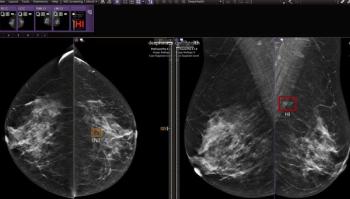
Chest Tomosynthesis Shows Promise for Early Cancer Detection
Digital chest tomosynthesis used as a screening tool for lung cancer shows comparable rates of detection to low-dose CT.
Digital chest tomosynthesis (DT) detected a comparable number of noncalcified lung nodules as low-dose CT during lung cancer screening, according to a study published in the
Italian researchers conducted a single-arm observational study comparing the use of DT with CT in a population that was at risk for developing lung cancer. From December 2010 to December 2011, 1,843 patients were enrolled from an initial group of 1,919 candidates. They ranged in age from 48 to 73, with a mean age of 61. Seventy-seven percent were current smokers; the remaining had a history of at least 20-pack years, without malignancy in the previous five years before the study. DT was performed at baseline and again one year later.
The researchers found that DT detected pulmonary abnormalities in 268 subjects (14.5 percent) and first-line basal CT was subsequently carried out in 132 subjects (7.2 percent), 68 (4.9 percent) of which were referred for follow-up CT. Positron-emission tomography/CT was performed on 27 individuals (1.46 percent), and lung cancer was detected in 18 (0.98 percent) of them.
The authors concluded that the DT holds promise as use for first-line lung cancer screening, particularly because of its lower cost and the reduction of radiation dosages.
Newsletter
Stay at the forefront of radiology with the Diagnostic Imaging newsletter, delivering the latest news, clinical insights, and imaging advancements for today’s radiologists.




























